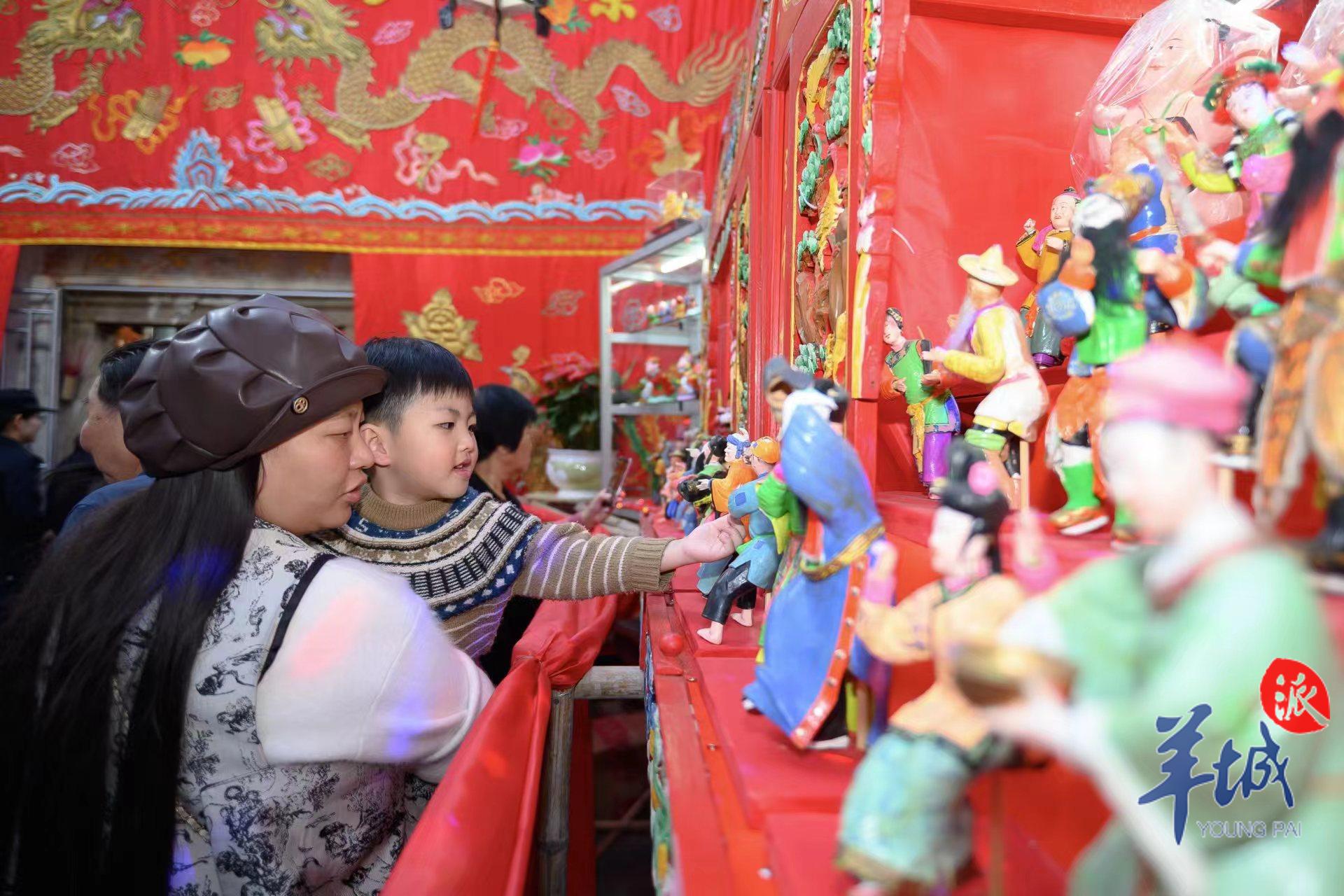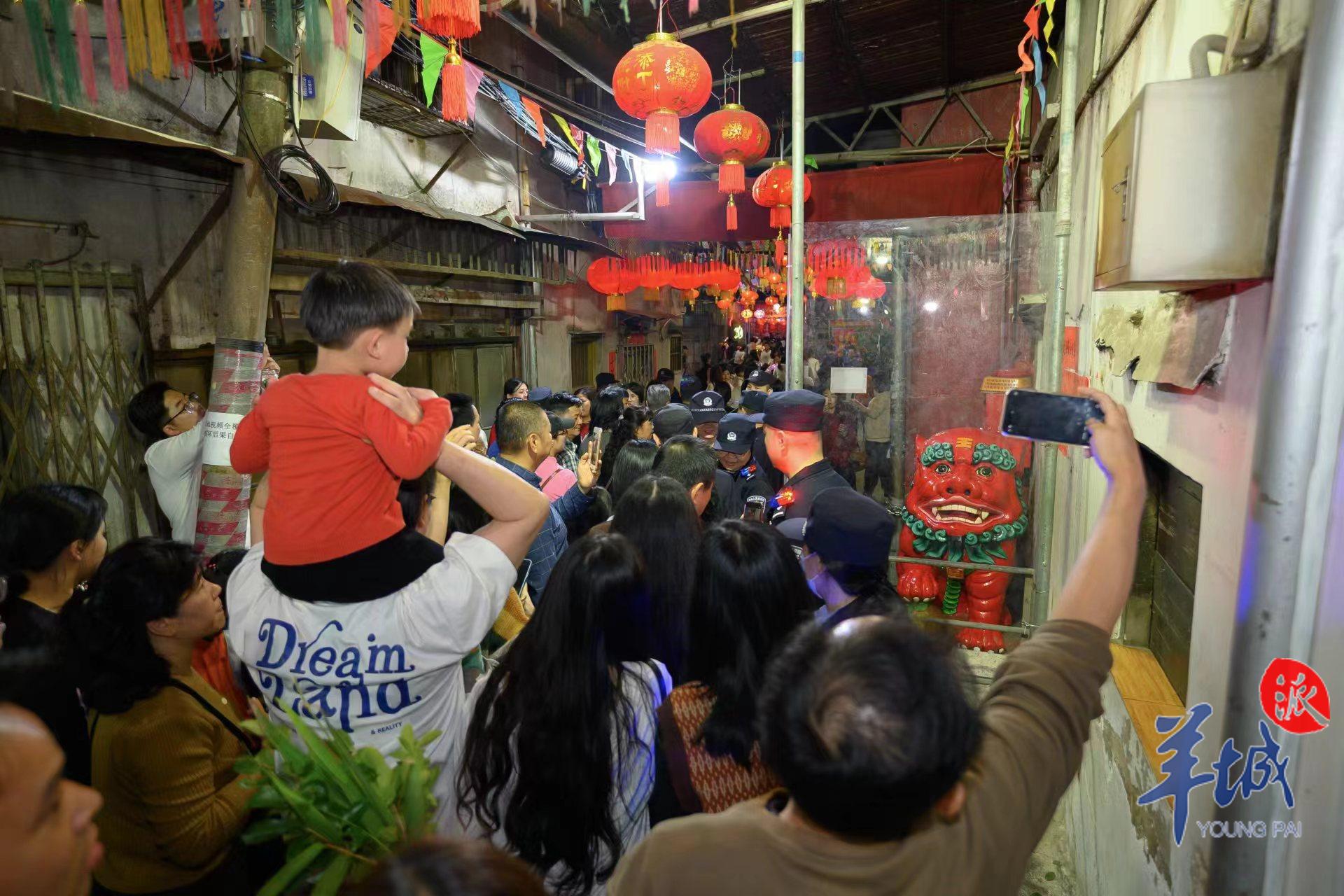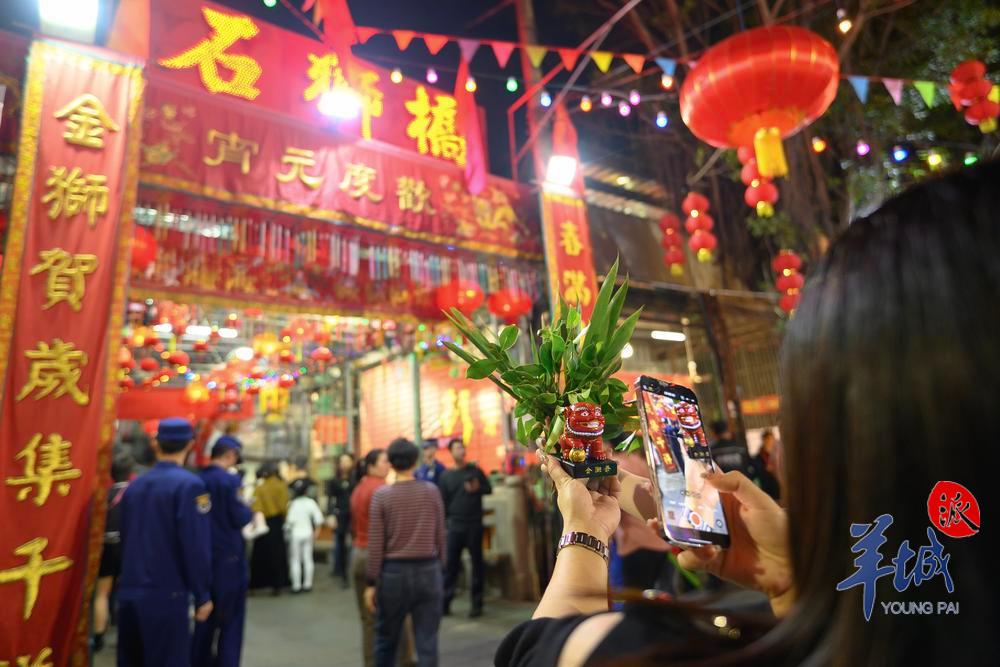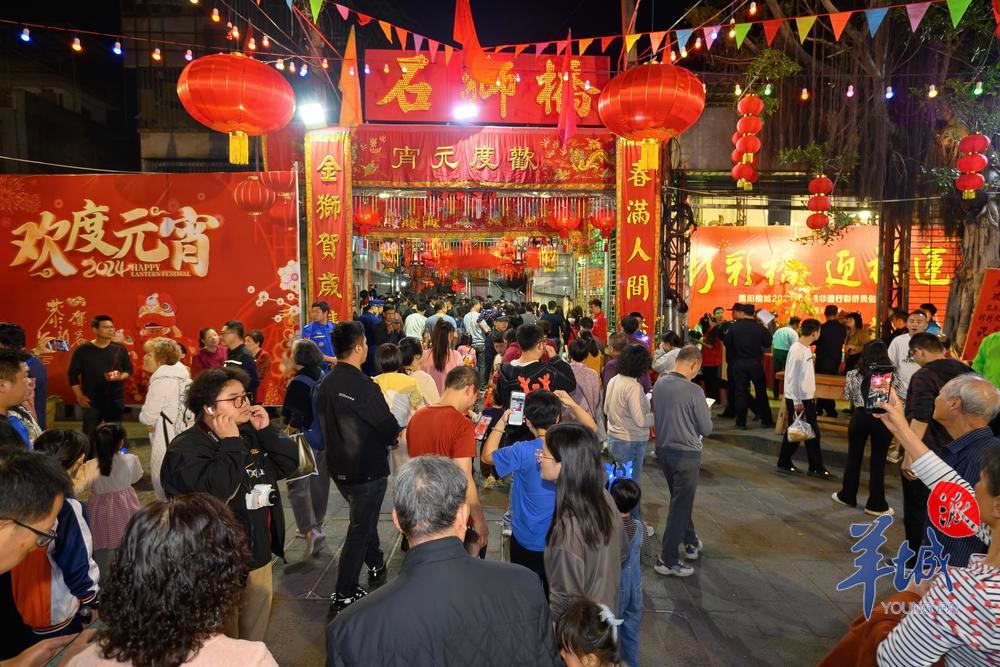
The practice of "Xingcaiqiao",meaning "crossing the colorful bridge",is a traditional custom in Jieyang City to celebrate the Lantern Festival. The 11th day of the first lunar month, which falls on February 20th this year, marks the beginning of the "Xingcaiqiao" activity.

As the night closes in, local residents in Jieyang dress up and gather with their families delightedly at Shishi Bridge in Rongcheng District to participate in the vibrant "Xingcaiqiao" activity, where they express good wishes for the New Year through the process of "crossing the colorful bridge and touching the stone lions".The lively scene, with people filling the streets and alleyways, is especially spectacular.
The "Xingcaiqiao" activity consists of three rounds. The first round, called "Xingtouqiao" (literally meaning "crossing the first bridge"), takes place on the evening of the 11th day of the first lunar month. During this round, people collect banyan branches and leaves at the end of the bridge and insert them above their doorframes at home to pray for good luck. The second round, known as "Xing'erqiao" (literally meaning "crossing the second bridge"), takes place on the evening of the 15th day of the first lunar month. On that day, the whole activity reaches its climax as people appreciate the lanterns decorated on the "colorful bridge" to celebrate the Lantern Festival. The third round, called "Xingweiqiao" (literally meaning "crossing the last bridge"), takes place on the evening of the 16th day of the first lunar month, marking the end of the entire "Xingcaiqiao" activity.

As a provincial intangible cultural heritage project, the tradition of "Xingcaiqiao" boasts a long history and was first recorded during the Qianlong reign of the Qing Dynasty (1736-1796 CE). However, due to historical reasons, the custom of "Xingcaiqiao" was interrupted for a considerable period from the 1960s to the 1980s. Not until the late 1980s, when the localresidentUncleLustarted the organizing work of the "Xingcaiqiao" activity, did Shishi Bridge become one of the earliest bridges to revive the tradition of "Xingcaiqiao" in Rongcheng District. As the first "colorful bridge" in Rongcheng since the reform and opening-up period, it has rekindled the passion for this tradition deeply rooted in the hearts of many local elderly residents.

It is worth mentioning that another provincial intangible cultural heritage project, the customs of "Wengzai Lantern" at Pomenglou Zheng in Rongcheng, has returned this year after being suspended for four years.
After crossing the "colorful bridge" on the 11th day of the first lunar month, people usually gather together and walk through winding alleys to visit the Pomenglouzheng and admire the "Wengzai Lanterns".The interior of the Pomenglouzheng shines brightly, with exquisite lamp screens displayed in each cabinet from the courtyard to the hall, each telling a well-known folk story.

As a traditional activity in Rongcheng, visiting Pomenglouzheng and admiring the "Wengzai Lanterns" presents a profound folk cultural experience, adding a unique festive charm to the ancient city.
Source :Yangcheng Evening News
揭阳“行彩桥”热闹非凡
“行彩桥”是揭阳市闹元宵的一项传统的民俗文化活动,2月20日农历正月十一,是揭阳民众“行头桥”的日子。
夜幕降临,华灯初上,当地市民三五成群,扶老携幼,兴致勃勃向揭阳市榕城区的石狮桥涌去,在“行彩桥、摸石狮”的过程中寄予诸多美好的新春祝愿,万人空巷的热闹场景尤其壮观。
“行彩桥”共分三回合进行。正月十一日晚开始的“行彩桥”,称为“行头桥”。“行头桥”时,人们采下桥头的榕枝竹叶,拿回家里插在门楣上,以祈带来好运;正月十五日晚进行“行彩桥”的第二回合,称为“行二桥”。人们既闹元宵赏花灯,又“行彩桥”,达到高潮,但远远比不上正月十一晚热闹;正月十六日晚进行“行彩桥”的第三回合,称为“行尾桥”,整个“行彩桥”活动至此结束。
据悉,作为省级非遗项目,“行彩桥”这项传统民俗历史悠久,在清朝乾隆年间就已有文字记载。不过由于历史原因,揭阳行彩桥习俗在20世纪60-80年代中断了较长的一段时间,至20世纪80年代末,石狮桥附近居民撸伯(已故)开始带头组织彩桥工作,才使得石狮桥成为榕城最早复兴行彩桥习俗的古桥之一,这也是改革开放后榕城最先重现的彩桥,勾起了众多老榕城人深藏于骨子里的彩桥情结。
值得一提的是,另外一项省级非遗项目榕城破门楼郑翁仔灯习俗在停办了四年后,今年再次回归。
通常人们正月十一行完彩桥后,便簇拥着穿过蜿蜒的小巷,赶到破门楼郑看一看“翁仔灯”。破门楼郑内灯火辉煌,从天井到大厅,一个个灯橱里摆放着一组组制作精美的灯屏。每一组“翁仔灯”都在讲述着一个个脍炙人口的民间故事。
破门楼郑看“翁仔灯”作为榕城传统活动,带着浓烈的民俗文化色彩,是古城亮丽、独特的节日风景。
文、图丨记者 陈锴跃 通讯员 黄晨发
翻译丨洪婷
-
Foshan's first 'ever bright city' draws crowds during the Chinese New Year holiday
2024-02-22 00:17:03 -
Guangdong-Macao In-Depth Cooperation Zone in Hengqin received 766,000 visitorsduring 2024 Chinese New Year holiday
2024-02-20 22:55:14 -
Guangzhou Culture Park's 2024 lantern show lights up on February 21st
2024-02-20 22:55:07 -
Main venue of nationwide dragon dance event to be presented in Huizhou during Lantern Festival
2024-02-20 22:55:00






